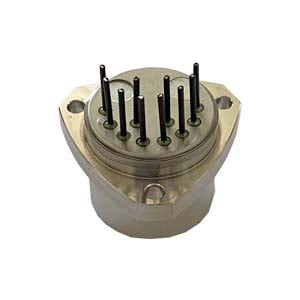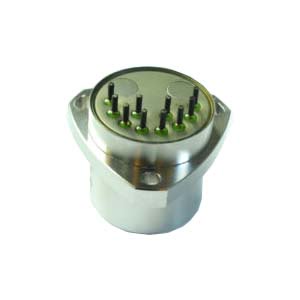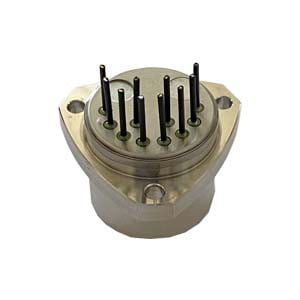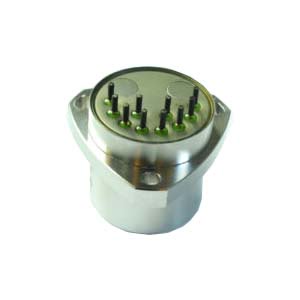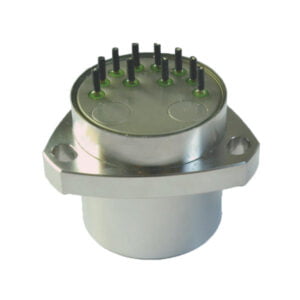The accelerometer senor consists of detection quality (also known as sensitive mass), supports, potentiometers, springs, dampers, and shells. The constraint of the test quality can only be moved along one axis, which is called the input shaft or the sensitive axis. When the instrument shell Accelerates along the sensitive axis as the carrier moves, according to Newton's law, the detection quality with certain inertia tries to keep its original motion state unchanged.
The relative motion between the accelerometer and the shell will result in the deformation of the spring, so the detection quality accelerates with the effect of the spring force. When the spring force is in equilibrium with the inertia force generated by acceleration of the detection mass, there will be no relative motion between the detection mass and the shell. The deformation of the spring reflects the magnitude of the acceleration measured. The potentiometer, as a displacement sensor, converts the acceleration signal to an electrical signal for output. The accelerometer is essentially an oscillating system with one degree of freedom, and a damper should be used to improve the dynamic quality of the system.
Advantages of acceleration sensors
The acceleration sensor has the characteristics of high precision and high sensitivity. It can accurately measure the acceleration change of the object during the movement and output it as a digital signal. This feature of high precision and high sensitivity. For example, the zero-bias stability of ER-QA-03A is 10-50μg, the scale factor is 15-50 PPM, and the second-order nonlinearity is 10-30μg/g2, which provides accurate data support in the industrial field to help engineers perform accurate motion control and analysis.
The acceleration sensor has the characteristics of small size and light weight. This allows acceleration sensors to be easily installed in a variety of devices and structures without placing too much of a burden on them. The small size and lightweight also mean that acceleration sensors can operate in limited Spaces and have high reliability. The ER-QA-03F is a small accelerometer with a diameter of Φ18.2mm, a scale factor of 150-220 PPM, and a second-order nonlinearity of 40-50μg/g2. For devices with strict space requirements, this accelerometer is a good choice.
Acceleration sensors have a wide operating temperature range. Whether it is in an extremely cold environment or in a high temperature environment, the acceleration sensor can work properly. This makes it possible to use it in extreme conditions, such as aerospace and deep sea exploration. ER-QA-03D can operate normally at a working temperature of -55~180 ° C, and its volume of 25×21mm, impact resistance 500-1000g 0.5ms.
The acceleration sensor has the function of self-diagnosis and fault detection. With internal algorithms and automatic calibration, the accelerometer detects and corrects its own faults, ensuring data accuracy and reliability. This self-diagnosis and fault detection capability helps reduce maintenance costs and increase productivity.
Quartz flexible accelerometer adopts the principle of flexible deformation of quartz material, uses external force to act on the mass of the flexible arm to make it flex, and measures the change of the flex signal to determine the acceleration. Quartz flexible accelerometer has the advantages of high precision, high sensitivity and high stability, but the manufacturing cost is high and the volume is large. MEMS accelerometers use microelectromechanical system technology to measure the acceleration using micro mechanical structure and electronic components. MEMS accelerometers have the advantages of small size, light weight, low power consumption and low cost, but the accuracy and stability are relatively low.
Quartz flexible accelerometers and MEMS accelerometers also have certain differences in application fields. Because the quartz flexible accelerometer has high precision and high stability, it is widely used in high-end fields such as military and aerospace. MEMS accelerometers are widely used in consumer electronics, automotive safety systems, sports bracelets and other fields because of their small size, low power consumption and low cost.
For more information, please feel free to contact info@ericcointernational.com
More Technical Questions
1.Calibration Method of Accelerometer
2.MEMS Accelerometer Packaging Technology
3.What Effect Does Temperature Have on Quartz Flexible Accelerometer?
4.How do parameters affect the performance of the quartz accelerometer?
5.Quartz Accelerometer VS MEMS Accelerometer
6.What is Sensitivity and Measurement Range in Quartz Accelerometer?
Products in Article

